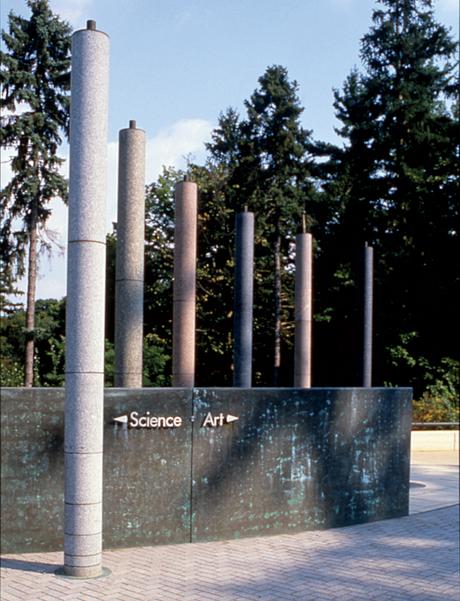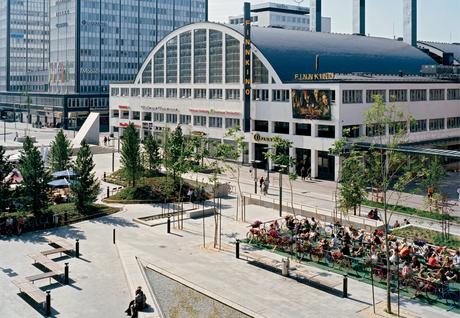
“We now have the technological and engineering means to construct structurally ridiculous buildings. Gothic cathedrals had to be genuinely ingenious constructions in their time; today, skyscrapers are often forced constructions that work totally against natural laws.” —Juhani Pallasmaa
After more than 40 years of working in the field, Finnish architect Juhani Pallasmaa recently closed his independent practice. A prolific author, essayist, professor, critic, and former museum director, he’s since focused his creative energy on teaching and writing about architecture. We caught up with the polymath ahead of a guest lecture at the NewSchool of Architecture & Design in San Diego to discuss what’s on his mind.
Nearly all cities have some version of a central downtown. What is your view on the world’s centers of architecture, the skylines? Why do we build this way?
It’s obsessive, partly for the modern man, but then particularly a consequence of the surreal materialism and consumer. It’s a process of acceleration, which is based on certain aspects of modernity—globalization, computers, and digital technology—and always paradoxical. It’s an effort to seek originality and uniqueness through sameness, repeating the universal model. And that’s, of course, doomed to failure.
From a human point of view, it cannot create a humane environment. In a city where all the starchitects have had their shot, there is no unity, no collective space. I can’t find a single section of a street that would have a social meaning. They are showcases of a total cultural emptiness.
Could you city a city that’s utilizing its architectural integrity in a better way?
The Nordic capitals are among the best examples—for instance, Helsinki has survived until now without a skyscraper. Now there are bout 40 projects for skyscrapers, which just shows that, even a city where there has traditionally been a strong resistance for following these global trends, is giving up.
Is there a reason, other than in a logistical sense, that you’ve only done one United States project (at the Cranbrook Academy of Art)?
I have not been offered, and have never made a phone call to get a commission. It has been an ethical principle that the work has to come to me and not vice versa. But I very much enjoyed doing the project: It was quite touching to be able to build something next to Eliel Saarinen, within the context of his Academy, and I was amazed by the process where, essentially, an architectural project turns into an astronomical instrument in the process. For me, it was quite touching to be able to build something next to Eliel Saarinen, within the context of his Academy.

The Arrival Plaza, completed in 1994, at the Cranbrook Academy of Art (below), is Pallasmaa’s sole U.S. project to date, and marks the entry of the historic campus designed by Eliel Saarinen.
Photo by Michael Perlmutter.Are there architects you feel are making a particularly positive impact?
There are numerous architects around the world who are doing good work, but aren’t as celebrated as much as the commercialized stars. Generally, I find more quality outside the big schools, and in smaller, local schools, local. The work is more real, in the sense of being rooted in and based on some real human values. But otherwise, architecture has become a very lonely fight.
What are some of challenges do you feel emerging architects face today? Are they more numerous than those of previous generations?
Absolutely. One is that the architect’s social position has been distorted. Either it’s a magazine-cover personality or the reverse, struggling with economic issues and unemployment. After the war, architects were respected professionally in our country—they were symbolic of building a new society (and as it happened, we had talented architects at that time). Nowadays, with the legalization of the profession, the constant growth of regulations has taken the architect away from sketching and creative practice.
Would you then say architects are more limited than ever before?
I would, which is paradoxical to say because now we have the technological means that make it possible to construct even structurally ridiculous buildings. Gothic cathedrals had to be genuinely ingenious constructions; today, skyscrapers are often forced construction with engineering knowledge and computerized skill, but work totally against natural laws.

Completed in 2006, the Kamppi Centre is located in downtown Helsinki. Collaborating with several firms, Juhani Pallasmaa Architects led the design of the 400,000-square-foot mega-structure. It houses a major transit hub below ground, and above, a lively pedestrian plaza, commercial complex, and mixed-use developments.
Photo by Michael Perlmutter.Your largest project to date, the Kamppi center in Helsinki, spans nearly 400,000 square feet. How does the physical scale of a project affect your outlook and approach?
The aspect that I’m most proud of in that project is the bus terminal, which was built exactly according to the proposal submitted in my competition entry. Without my competition entry we would have busses where now we have the square, and that makes, of course, a huge difference to the atmosphere of the center. Otherwise, as a commercial project, it was too fast and too much beyond an architect’s means of doing things properly, but will at least serve inhabitants of Helsinki for decades to come. All the legal responsibilities, in addition to the human responsibilities—it was almost too much.
I have myself always liked smaller work, where I can develop an intimate connection with the work, and understand it thoroughly. I think building scale, in terms of size, is not the decisive thing. It is the process of scaling down and, for me, the finest architectural qualities are the fusion of opposites—monumental intimacy or intimate monumentality are things that I like very much. For instance, in another project of mine, the Finnish Institute in Paris, the idea of certain monumentality in a very small, intimate scale was my concern. In my view, a building—big, huge or small—always has to come down to the touch of the hands. There has to be that final connection.
What does architecture, especially large-scale architecture, satisfy for us, beyond the need for shelter? For what purpose does man design and build? Is it inherent?
For me, it’s inherent, because I see the external world and the inner world—the mental world—as a continuum. I see everything that we build or do as extensions of ourselves, and, to a large degree, of our nervous systems. We can control things, remember things, and experience things through this incredibly expanded self that technology, construction, and mobility has granted us. And if, for instance, politicians and decision-makers would realize that architecture is also a form human mental space, they would be much more careful about what is being done.
Do you feel there’s hope for more thoughtful architecture and buildings?
In the advertising world and much of the commercial world, human minds are manipulated to become even more obsessive consumers. In my view, the task of art and architecture is to liberate individuals, not to direct or manipulate. Art and architecture have to be open-ended and that is why the poetic dimension for me is so essential. Only poetry can empower people in a liberating manner.
Since we’re here in San Diego, I’d love to hear your thoughts on Louis Kahn’s Salk Institute. You’ve referenced his belief that silence and light are among the strongest aspects of architecture.
It’s one of my favorite buildings. Louis Kahn’s Salk Institute, Kimbell Art Museum and the Dhaka Parliament have all made a really strong impression on me. I am amazed by Kahn’s capacity to tie together history and modernity of our time while still suggesting a humanistic image of the future. The Salk plaza is one of the most amazing spaces in the history of architecture: It’s so powerful, but it’s empty—emptiness and reduction have that power. It makes you immediately aware of the ocean, the sky, and yourself. It is akin to Merleau-Ponty’s idea that we do not come to see a work of art—we come to see the world according to it.
What projects are you working on now?
I closed down my office a few years ago, so I’m only writing and teaching now, and doing both more than I have ever done.
